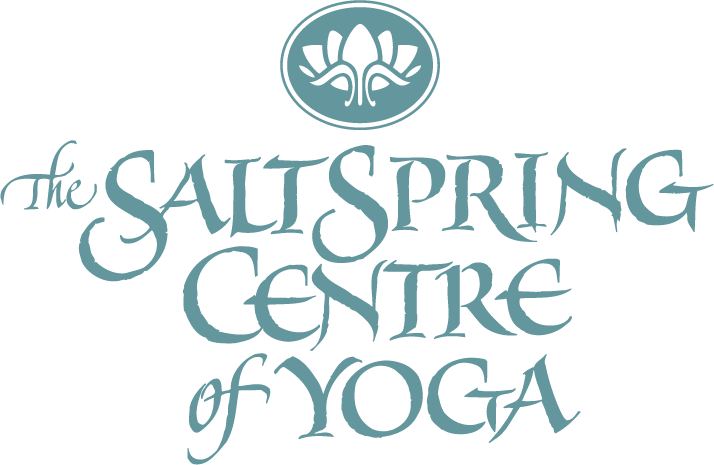Asana of the Month: Utthita Trikonasana
Extended Triangle Pose:
Utthita Trikonasana
(A standing pose/lateral bend)

It’s the feeling of wringing out the back and spinal muscles while creating space for breath in the corners of the torso, that keeps this pose a staple in my practice.
I remember enjoying this pose in a yoga class years ago, when my back muscles felt tight and knotted from weight training and swimming. Triangle pose for me was a soothing and relieving posture to the tension in my back and spinal column.
When this pose is performed with care and attention to one’s own ability and physical restrictions in the hips and shoulders, it can be the most rejuvenating posture to find.
Before you begin, recognize the areas in your body that are tight and less flexible, that are open and more mobile. With this in mind, accept that some modifications maybe be needed. They are indicated here.
To Start:
1. Stand in Tadasana pose (Mountain pose) facing forward (the long side of your sticky mat).
2. Step your feet apart, approximately 1 metre or the length of your leg. The length of space between your feet determines the ease for folding laterally with the torso over the leg.
3. Keep your feet parallel to each other and the big toes aligned. Firm the legs and feel an anchoring sensation through the feet; gently tip the hips up and down (side to side), to feel your mobility in the pelvis. Feel your balance.
4. Turn your right foot to 90 %, keeping that foot parallel to the long side of your mat. Turn your left foot slightly forward to the right. As you adjust your feet, perhaps you will notice the turn made with the legs, torso and hips. Keep your hips and torso facing forward. Press down through your feet and lift up with the knees and thighs, creating a solid foundation.
5. Inhale to lift the arms up to shoulder height parallel with the floor, palms facing down. Soften the neck and shoulder muscles and notice if you create tension in this space.
6. Inhale and lengthen up. On the next exhale, bend to the right, lengthening over the right leg while pressing the left hip up and back, and folding at the right hip crease. Notice a comfortable reach over the front leg. Bring your right hand to the thigh, shin, ground or block. Note: Try not to turn the hips or over reach and bend forward; stay in the lateral plane. This means find a comfortable lateral movement over the leg without strain, with the right hand giving the pose stability and length. Breathe!
7. Left arm reaches toward the ceiling with the chest open and the palm facing forward. If you feel the chest collapsing and the left side ribs compressing, then walk your right hand up the leg to a higher spot to lift and lengthen the left side. Take the left hand to the left hip and encourage space across the torso. Breathe!
8. Look forward or turn the head to see your thumb. Assess the sensation through the legs (foundation), the spine, and your balance.
9. Keeping the thighs firm, roll gently back while moving the left hip back and opening the chest.
10. Inhale to extend the neck and spine. On the exhale notice the depth in the right hip crease. Breathe!
Coming out of the pose:
1. Firm the legs and press strongly through the feet and inhale while lifting upright; reach through the left arm.
2. Turn the right foot forward parallel with left, and step legs together into Tadasana.
3. Repeat on left side.
Benefits:
• Develops strength in the legs, back and abdominals.
• Relieves backaches and neck tension.
• Tones the respiratory, urinary/genital systems and spinal nerves.
• Stimulates the digestive and circulatory systems.

Modifications:
• Keep legs closer together if you’re tight in the hips and lower back.
• Stand with your back to a wall, using the wall to support and guide the lateral bend.
• Keep a block near for your hand to reach to for support, or take the hand to the shin or thigh.
About the instructor
 Peter Ashok Baragon graduated from SSCY’s Yoga Teacher Training ten years ago and has been teaching in Vancouver and West Vancouver ever since. He enjoys teaching at community based centres for the variety of participants and the opportunity to offer different styles throughout the week. Rooted in classical ashtanga yoga and hatha yoga, he also teaches yin, restorative, chair-yoga for seniors and power flow vinyasa. Teaching for him flows from a place of love, compassion and gratitude.
Peter Ashok Baragon graduated from SSCY’s Yoga Teacher Training ten years ago and has been teaching in Vancouver and West Vancouver ever since. He enjoys teaching at community based centres for the variety of participants and the opportunity to offer different styles throughout the week. Rooted in classical ashtanga yoga and hatha yoga, he also teaches yin, restorative, chair-yoga for seniors and power flow vinyasa. Teaching for him flows from a place of love, compassion and gratitude.
Read more about Peter’s experience as a student of the Salt Spring Centre’s Yoga Teacher Training program.
Other postures taught by Peter
